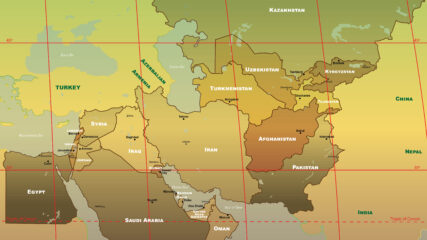Countries from Mexico south have significant Jewish populations and have played important roles in Jewish history, from the high of Guatemala’s Jorge García-Granados casting the first U.N. vote in 1947 for the creation of Israel to the low of Hezbollah bombing the Israeli Embassy in 1992 and the AMIA Jewish center in 1994 in Argentina. Today, Mexico’s president-elect is a Jewish woman, but Jewish communities face rising antisemitism. In response to the war Hamas started Oct. 7 by killing 1,200 people in Israel and taking more than 240 hostages, Colombia, Bolivia and Belize have cut diplomatic relations with Israel. Brazil has withdrawn its ambassador. But Argentina’s president has promised to move his country’s embassy to Jerusalem. Shedding light on the varieties of Latin American relations with Israel and the condition of Jewish communities are Carrie Filipetti, the executive director of the Vandenberg Coalition and a former State Department official focused on the Western Hemisphere; Eduardo Kohn, B’nai B’rith International’s Latin American director; Leah Soibel, the founder and CEO of nonprofit media organization Fuente Latina; and Dr. Daniel Fainstein, the dean of Jewish studies at Hebraica University in Mexico City. Moderating the webinar Wednesday, July 3, is Dr. Ken Stein, CIE’s president and an Emory University emeritus professor of Middle East history, political science and Israel studies.
Latest articles from CIE

President Trump Welcomes Saudi Crown Prince MBS With F-35 Deal, November 2025
Prince Mohammed bin Salman and President Donald Trump continued a decades-long process of strengthening Saudi-U.S. ties during a White House meeting that put Saudi security and investment ahead of the Abraham Accords.

U.N. Security Council Resolution 2803, Adopting the Gaza Peace Plan, November 2025
The U.N. Security Council voted 13-0 on November 17, 2025, to adopt Resolution 2803, endorsing the 20-point Trump peace plan to end the Hamas-Israel war. The precedent-setting resolution provides a pathway to stability in the Gaza Strip and offers a chance for less violence in the Palestinian-Israeli relationship.

Revocation of UNGA Resolution 3379, 1991
The U.N. General Assembly overwhelming reverses a Soviet-driven decision 16 years earlier to declare Zionism a form of racism.

President Clinton to Knesset, 1994: Israel-Jordan Peace Is Blessing to U.S.; Syria Is Next
In only the second Knesset address by a U.S. president, Bill Clinton hails the treaty Jordan and Israel signed the previous day as part of a peaceful wave sweeping the region, including the year-old Oslo Accords and soon a likely treaty with Syria.

U.S. Admiral Hails Fallen Ex-Hostage as Hero in 2 Countries, November 2025
The CENTCOM head demonstrates the strong U.S.-Israeli relationship in his eulogy for Omer Neutra, an Israeli-American soldier whose body was held in Gaza for two years.

CENTCOM Commanders’ Insights on Israel’s Inclusion, 2021-2024
January 15, 2021 The U.S. Department of Defense announced in the final week of the first Trump administration that it was shifting Israel from the area of responsibility of the U.S. European Command to the…

CENTCOM Area of Responsibility, 2021
The U.S. military’s Central Command is responsible for an area stretching from Egypt to Pakistan to Kazakhstan, including Israel since September 2021.

President George W. Bush Hails “Unbreakable” U.S.-Israel Alliance in Knesset Address, 2008
May 15, 2008 Source: https://georgewbush-whitehouse.archives.gov/news/releases/2008/05/20080515-1.html When George W. Bush became the third U.S. president to address the Knesset on May 15, 2008, he was not trying to finalize a peace treaty, as Jimmy Carter was…

#152 Contemporary Readings October 2025
November 3, 2025 Compiled by Maya Rezak and Ken Stein David Adesnik, Mariam Wahba, Ahmad Sharawi, David Daoud, Natalie Ecanow, Hussain Abdul-Hussain and Bridget Toomey, “Patient Extremism: The Many Faces of the Muslim Brotherhood,” Foundation…
